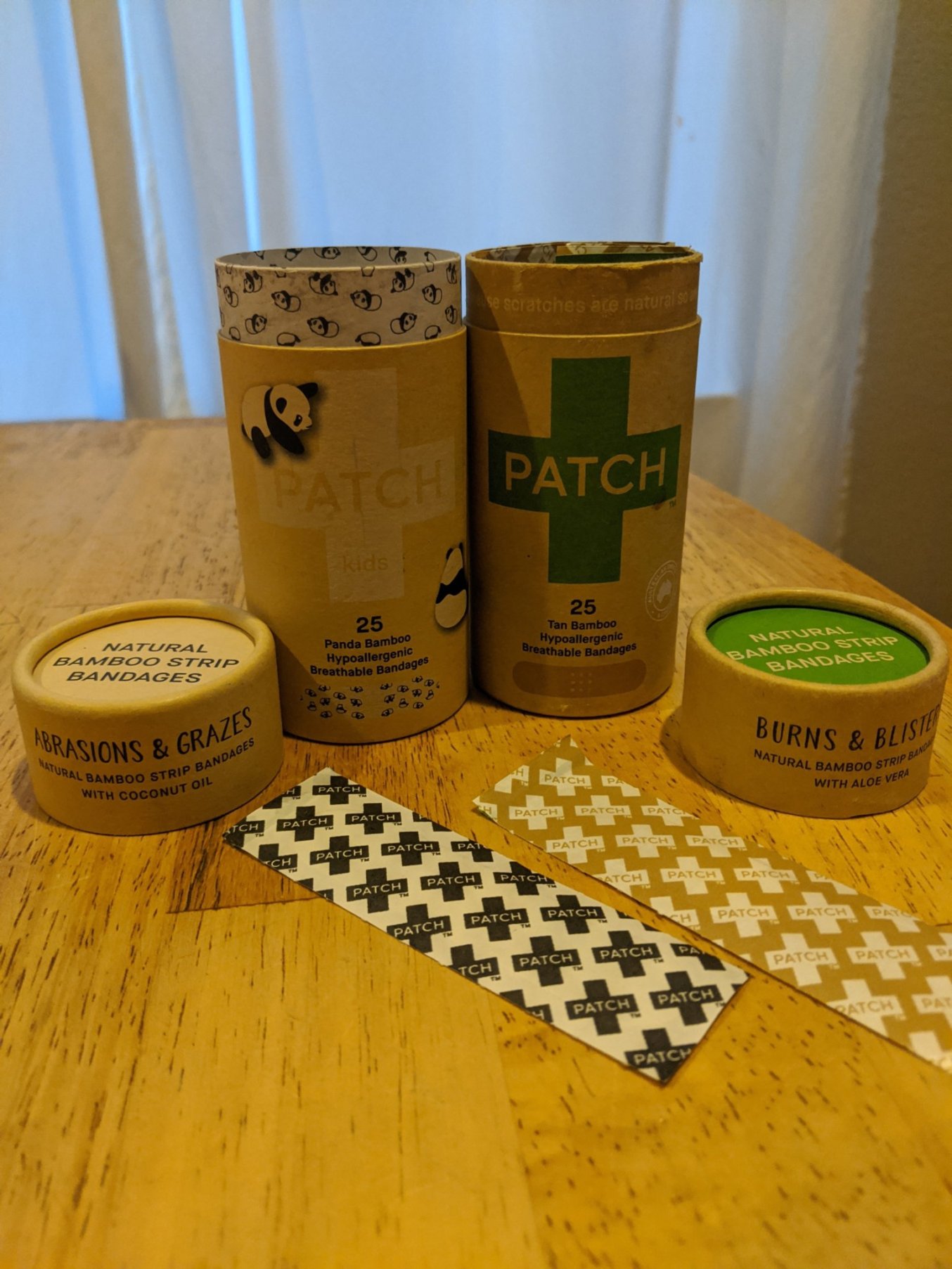I purchased this product myself and my review is my own experience.
I’ve been trying out Patch bandages over the last several months. I have two of the four types: coconut oil and aloe vera. I’m almost out so I’m ready to share.
I first heard about Patch bandages on Treehugger. Read the post, it talks about traditional bandages’ chemicals and reactions. It’s very interesting. Patch bandages have been awarded for being plastic- and latex-free, biodegradable, vegan, and cruelty-free. I immediately contacted Austin Resource Recovery to see if these could be composted. There can be some misunderstanding about biodegradable vs. compostable but ARR sorted it out with the company and approved the product for curbside compost carts without blood. I know it may seem a little weird to talk about a bandage you can’t compost with blood on it, but not all “wounds” bleed, some just need protected and time to heal so it can still be of use.
Please do not compost them if they have blood on them. Trash bloody Patch bandages. Human blood is not allowed in the curbside compost carts.
Most bandages are made of plastic and other materials. They’re a composite so they go in the trash. Even the wrapper on Band-aid brand bandages is not completely paper, they’re, “White Sterilizable Kraft paper with synthetic adhesive (not made with natural rubber).” Adhesive typically means glue which to me means no compost, so I don’t put traditional bandage wrappers in the compost (they’re too tiny for the recycling carts). To find a completely plastic free/synthetic adhesive-free bandage was great!

There is no plastic. The bandages are made of bamboo. They are sterile according to the package. The cardboard tube is sturdy, it holds up so much better than any brand bandage box and I’m a bandage girl. I have on at least one almost all the time for a healing cut, cracked skin, scrap, etc.
Each style comes in a different color paper to help distinguish what type if they’re loose. They come in sheets of five bandages so you can grab a sheet and put it in your purse/bag. They’re easy to open unlike almost all current traditional bandages, or is this just me?
My son loves them, especially the charcoal panda ones, and they don’t hurt as much when you pull them off. They don’t cause that sticky goo that you have to scrap off and they do not cause a rash/redness when they are removed.
The only complaint I have is that I mostly need bandages on my hands and these do not hold up in water. They are great for not-constant-water sites like ankles, legs, arms and do okay on my left/non-dominant hand. I can’t use them on my right/dominant hand. They unwrap after one good hand washing.
They are also a bit more expensive than traditional bandages. I bought my Patch at CVS for $6.99 at $0.29 a bandage for 25 count. My favorite bandage right now is Nexcare Max Hold Waterproof from Target for $2.79 at $0.19 a bandage for 15 count, and these stay on well through lots of hand-washing and adhere well to the tips of my fingers.

I sliced open the pad of my right index finger this week opening my contact lens. The plastic snaps off and I cut my finger on a really rugged plastic edge. Patch came off the first wash. My Nexcare bandage will last all day through all the washes of childcare duties.
Reminder that all contact lens materials are recyclable now: see I’ve Got My Eyes On You.
Patch bandages have a Store Locator. For Central Texas it’s mostly CVS and Randalls. I saw them at my Natural Grocers this weekend and they’re now available on Amazon.
If you’re accident prone and want to be more zero waste/plastic free I think these are worth trying out. You may get better adhesion than me, or you may not wash your hands fifty times a day. I don’t always bleed on bandages and with the coconut, aloe or charcoal options you may not need an antibiotic ointment in it’s non-recyclable plastic tube. So things to think about and consider. Everyone is different, this is my experience. Please share yours!
